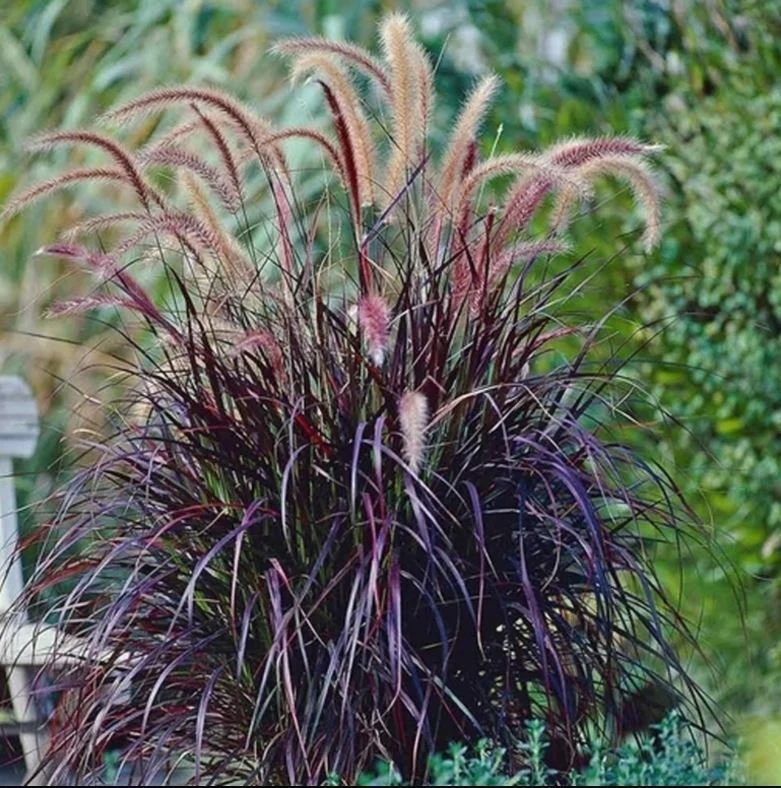Purple Fountain Grass (Pennisetum setaceum ‘Rubrum’) is a beautiful ornamental grass known for its purple-tinged foliage and feathery flower plumes. Here’s a care guide to keep your Purple Fountain Grass healthy and thriving:
1. Light Requirements:
- Full Sun: Purple Fountain Grass thrives in full sun, meaning it should receive at least 6 hours of direct sunlight each day. The more sunlight, the better the foliage color.
2. Watering:
- Moderate Watering: While this grass is relatively drought-tolerant, it needs regular watering to establish its roots during the first few weeks of planting.
- Once Established: Water it thoroughly but allow the soil to dry out between watering. Overwatering can lead to root rot.
3. Soil:
- Well-Draining Soil: Purple Fountain Grass prefers well-draining soil with good aeration. It does well in sandy or loamy soil.
- pH: A slightly acidic to neutral pH (6.0-7.0) is ideal.
4. Fertilizing:
- Light Fertilization: Fertilize in the spring with a balanced, slow-release fertilizer. Avoid over-fertilizing, as this can lead to excessive growth at the expense of the flowers.
- Annual Feeding: You can feed it once a year during the growing season.
5. Pruning:
- Cutting Back: In late winter or early spring, cut the grass back to the ground. It’s best done before new growth begins, so you can avoid cutting back any new shoots.
- Deadheading: Remove any spent flower plumes throughout the growing season to maintain a neat appearance, though they can be left to add texture and movement.
6. Temperature and Hardiness:
- USDA Zones 9-11: Purple Fountain Grass is best suited for warm climates. It can handle light frost but should be protected or brought indoors in colder climates.
- Winter Care: In cold climates, consider treating it as an annual or bringing it indoors during winter.
7. Container Growing:
- If you’re growing it in a container, make sure the pot has drainage holes and use a well-draining potting mix. Containers allow for easier overwintering by bringing the plant indoors.
8. Pests and Problems:
- Pests: Purple Fountain Grass can occasionally attract aphids, spider mites, and grasshoppers. Regularly inspect for pests and treat with insecticidal soap if needed.
- Diseases: It’s generally resistant to disease but can suffer from fungal infections if overwatered. Avoid watering the foliage to reduce fungal risk.
9. Propagation:
- Division: The easiest way to propagate Purple Fountain Grass is through division. Divide the clumps in the spring every 2-3 years to keep the plant healthy and prevent overcrowding.
By following these care steps, you’ll have a stunning addition to your garden with the unique beauty of Purple Fountain Grass!


